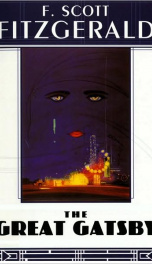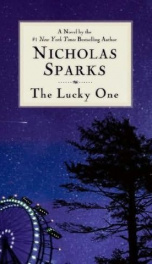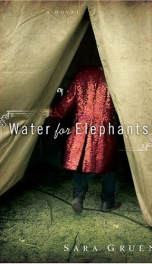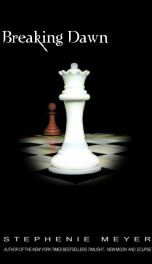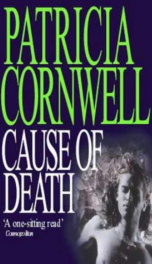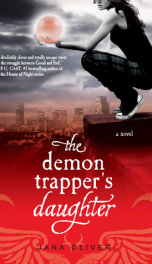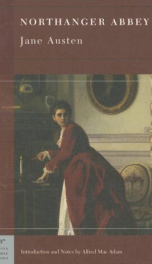Fitzgerald Francis Scott
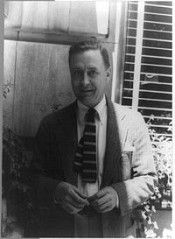
Francis Scott Key Fitzgerald (September 24, 1896 – December 21, 1940) was an American author of novels and short stories, whose works are evocative of the Jazz Age, a term he coined himself. He is widely regarded as one of the twentieth century's greatest writers. Fitzgerald is considered a member of the "Lost Generation" of the Twenties. He finished four novels, This Side of Paradise, The Beautiful and Damned, Tender is the Night and his most famous, the celebrated novel, The Great Gatsby. A fifth, unfinished, novel, The Love of the Last Tycoon was published posthumously. Fitzgerald also wrote many short stories that treat themes of youth and promise along with despair and age. Born in St. Paul, Minnesota, to an upper-middle-class Irish Catholic household, Fitzgerald was named after his famous second cousin, twice removed, Francis Scott Key,[1] but was referred to as "Scott". He spent 1898–1901 in Syracuse and 1903–1908 in Buffalo, New York, where he attended Nardin Academy.[2] When his father was fired at Procter & Gamble, the family returned to Minnesota, where Fitzgerald attended St. Paul Academy in St. Paul from 1908–1911. His first literary effort, a detective story, was published in a school newspaper when he was 12. When he was 16, he was expelled from St. Paul Academy for neglecting his studies. He attended Newman School, a prep school in Hackensack, New Jersey, in 1911–1912, and entered Princeton University in 1913 as a member of the Class of 1917. There he became friends with future critics and writers Edmund Wilson (Class of 1916) and John Peale Bishop (Class of 1917), and wrote for the Princeton Triangle Club. His absorption in the Triangle—a kind of musical-comedy society—led to his submission of a novel to Charles Scribner's Sons where the editor praised the writing but ultimately rejected the book. He was a member of the University Cottage Club, which still displays Fitzgerald's desk and writing materials in its library. A poor student, Fitzgerald left Princeton to enlist in the US Navy during World War I; however, the war ended shortly after Fitzgerald's enlistment.[3] While at Camp Sheridan, Fitzgerald met Zelda Sayre (1900–1948), the "silver girl", in Fitzgerald's words, of Montgomery, Alabama youth society. The two were engaged in 1919, and Fitzgerald moved into an apartment at 1395 Lexington Avenue in New York City to try to lay a foundation for his life with Zelda. Working at an advertising firm and writing short stories, he was unable to convince Zelda that he would be able to support her, leading her to break off the engagement. Fitzgerald returned to his parents' house at 599 Summit Avenue, on Cathedral Hill, in St. Paul to revise The Romantic Egoist. Recast as This Side of Paradise, about the post-WWI flapper generation, it was accepted by Scribner's in the fall of 1919, and Zelda and Scott resumed their engagement. The novel was published on March 26, 1920, and became one of the most popular books of the year. Scott and Zelda were married in New York's St. Patrick's Cathedral. Their daughter and only child, Frances Scott "Scottie" Fitzgerald, was born on October 26, 1921. The 1920s proved the most influential decade of Fitzgerald's development. The Great Gatsby, considered his masterpiece, was published in 1925. Fitzgerald made several excursions to Europe, notably Paris and the French Riviera, and became friends with many members of the American expatriate community in Paris, notably Ernest Hemingway. Fitzgerald’s friendship with Hemingway was quite vigorous, as many of Fitzgerald’s relationships would prove to be. Hemingway did not get on well with Zelda. In addition to describing her as "insane" he claimed that she “encouraged her husband to drink so as to distract Scott from his ‘real’ work on his novel,"[4] 1 the other work being the short stories he sold to magazines. This “whoring”, as Fitzgerald, and subsequently Hemingway, called these sales, was a sore point in the authors’ friendship. Fitzgerald claimed that he would first write his stories in an authentic manner but then put in “twists that made them into saleable magazine stories.”² Fitzgerald's marriage was mixed—both destructive and constructive. Fitzgerald drew largely upon his wife's intense and flamboyant personality in his writings, at times quoting direct passages from her letters and personal diaries in his work. Zelda made mention of this in a 1922 mock review in the New York Tribune, saying that "[i]t seems to me that on one page I recognized a portion of an old diary of mine which mysteriously disappeared shortly after my marriage, and also scraps of letters which, though considerably edited, sound to me vaguely familiar. In fact, Mr. Fitzgerald—I believe that is how he spells his name—seems to believe that plagiarism begins at home" (Zelda Fitzgerald: The Collected Writings, 388). But the impact of Zelda's personality on his work and life is often overstated, as much of his earliest writings reflect the personality of a first love, Ginevra King. In fact, the character of Daisy as much represents his inability to cultivate his relationship with King as it does the ever-present fact of Zelda. (Although Gatsby's economic failure to immediately wed Daisy in 1917, with an eventual return in financial triumph, does closely mirror Fitzgerald's own experiences with his future wife.) Although Fitzgerald's passion lay in writing novels, only his first novel sold well enough to support the opulent lifestyle that he and Zelda adopted as New York celebrities. As did most professional authors at the time, Fitzgerald supplemented his income by writing short stories for such magazines as The Saturday Evening Post, Collier's Weekly, and Esquire, and sold movie rights of his stories and novels to Hollywood studios. Many of these stories act as testing grounds for his novels. For example, "Absolution" was intended as an earlier chapter in The Great Gatsby. Because of this lifestyle, as well as the bills from Zelda's medical care when they came, Fitzgerald was constantly in financial trouble and often required loans from his literary agent, Harold Ober, and his editor at Scribner's, Maxwell Perkins. When Ober decided not to continue advancing Fitzgerald, the author severed ties with his longtime friend and agent. (Fitzgerald offered a good-hearted and apologetic tribute to this support in the late short story "Financing Finnegan.") Fitzgerald began working on his fourth novel during the late 1920s but was sidetracked by financial difficulties that necessitated his writing commercial short stories, and by the schizophrenia that struck Zelda in 1930. Her emotional health remained fragile for the rest of her life. In 1932, she was hospitalized in Baltimore, Maryland. Scott rented the "La Paix" estate in the suburb of Towson, Maryland to work on his latest book, the story of the rise and fall of Dick Diver, a promising young psychiatrist who falls in love with and marries Nicole Warren, one of his patients. The book went through many versions, the first of which was to be a story of matricide. Some critics have seen the book as a thinly-veiled autobiographical novel recounting Fitzgerald's problems with his wife, the corrosive effects of wealth and a decadent lifestyle, his own egoism and self-confidence, and his continuing alcoholism. Indeed, Fitzgerald was extremely protective of his material (their life together). When Zelda wrote and sent to Scribner's her own fictional version of their lives in Europe, Save Me the Waltz, Fitzgerald was angry and was able to make some changes prior to the novel's publication, and convince her doctors to keep her from writing any more about what he called his "material," which included their relationship. His book was finally published in 1934 as Tender Is the Night. Critics who had waited nine years for the followup to The Great Gatsby had mixed opinions about the novel. Most were thrown off by its three-part structure and many felt that Fitzgerald had not lived up to their expectations. The novel did not sell well upon publication, but like the earlier Gatsby, the book's reputation has since risen significantly. Although he reportedly found movie work degrading, Fitzgerald was once again in dire financial straits, and spent the second half of the 1930s in Hollywood, working on commercial short stories, scripts for Metro-Goldwyn-Mayer (including some unfilmed work on Gone with the Wind), and his fifth and final novel, The Love of the Last Tycoon. Published posthumously as The Last Tycoon, it was based on the life of film executive Irving Thalberg. Scott and Zelda became estranged; she continued living in mental institutions on the East Coast, while he lived with his lover Sheilah Graham, a gossip columnist, in Hollywood. From 1939 until his death, Fitzgerald mocked himself as a Hollywood hack through the character of Pat Hobby in a sequence of 17 short stories, later collected as "The Pat Hobby Stories." Fitzgerald had been an alcoholic since his college days, and became notorious during the 1920s for his extraordinarily heavy drinking, leaving him in poor health by the late 1930s. He especially liked to drink gin. In addition, Fitzgerald was likely bipolar , a condition exacerbated by drug abuse. According to Zelda's biographer, Nancy Milford, Scott claimed that he had contracted tuberculosis, but Milford dismisses it as a pretext to cover his drinking problems. However, Fitzgerald scholar Matthew J. Bruccoli contends that Fitzgerald did in fact have recurring tuberculosis, and Nancy Milford reports that Fitzgerald biographer Arthur Mizener said that Scott suffered a mild attack of tuberculosis in 1919, and in 1929 he had "what proved to be a tubercular hemorrhage". It has been said that the hemorrhage was caused by bleeding from esophageal varices. Fitzgerald suffered two heart attacks in late 1940. After the first, in Schwab's Drug Store, he was ordered by his doctor to avoid strenuous exertion. He moved in with Sheilah Graham, who lived in Hollywood on North Hayworth Ave., one block west of Fitzgerald's apartment on North Laurel Ave. Fitzgerald had two flights of stairs to get to his apartment; Graham's was a ground floor apartment. On the night of December 20, 1940, Fitzgerald and Sheilah Graham attended the premiere of "This Thing Called Love" starring Melvyn Douglas and Rosalind Russell. As the two were leaving the Pantages Theater, Fitzgerald experienced a dizzy spell and had trouble leaving the theater; upset, he said to Ms. Graham, "They think I am drunk, don't they?".
do you like this author?
What readers are saying
What do you think? Write your own comment on this book!
write a commentWhat readers are saying
What do you think? Write your own comment on this author!
write a commentBook list

This Side of Paradise
Series:
Unknown
Year:
Unknown
Raiting:
4.5/5
An American writer, exponent and a “symbol” of the Jazz Age, Francis Scott Fitzgerald was a representative of the Lost Generation that appeared in period of two World Wars. His first novel “This Side of Paradise”, though rather immature, had a striking success and made young Fitzgerald famous overnight. It was the first novel to foresee the generation of young disillusioned people, trying to find themselves in a new post-war life. Amory Blaine, the protagonist on the story, a rich and handsome Princeton University student, considered by many to be partially based on the author himself, goes his way from college to the First World War. This bright chronicle of youth remains highly significant even decades later
Show more
add to favoritesadd In favorites
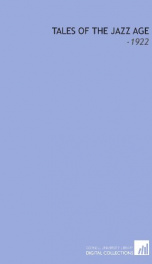
Tales of the Jazz Age
Series:
Unknown
Year:
Unknown
Raiting:
5/5
The expression “Jazz Age” or “Golden Age of Jazz” became wide-spread, after Francis S.K.Fitzgerald had used it in his work “Tales of the Jazz Age”. The book was published in 1922, the time of impetuous spread of jazz. “Tales of the Jazz Age” is a collection of eleven short stories, divided into three parts; it includes one of his better-known short stories, "The Curious Case of Benjamin Button", written with wit, sensitivity and beauty.
Show more
add to favoritesadd In favorites

Flappers and Philosophers
Series:
Unknown
Year:
Unknown
Raiting:
3/5
Purchase of this book includes free trial access to www.million-books.com where you can read more than a million books for free. This is an OCR edition with typos. Excerpt from book: THE ICE PALACE The sunlight dripped over the house like golden paint over an art -x jar, and the freckling shadows here and there only intensified the rigor of the bath of light. The Butterworth and Larkin houses flanking were intrenched behind great stodgy trees; only the Happer house took the full sun, and all day long faced the dusty road-street with a tolerant kindly patience. This was the city of Tarleton in southernmost Georgia, September afternoon. Up in her bedroom window Sally Carrol Happer rested nineteen-year-old chin on a fifty-two-year-old sill and watched Clark Darrow's ancient Ford turn the corner. The car was hotbeing partly metallic it retained all the heat it absorbed or evolvedand Clark Darrow sitting bolt upright at the wheel wore a pained, strained expression as though he considered himself a spare part, and rather likely to break. He laboriously crossed two dust ruts, the wheels squeaking indignantly at the encounter, and then with a terrifying expression he gave the steering-gear a final wrench and deposited self and car approximately in front of the Happer steps. There was a plaintive heaving sound, a death-rattle, followed by a short silence; and then the air was rent by a startling whistle. Sally Carrol gazed down sleepily. She started to yawn, but finding this quite impossible unless she raised her chin from the window- sill, changed her mind and continued silently to regard the car, whose owner sat brilliantly if perfunctorily at attention as he waited for an answer to his signal. After a moment the whistle once more split the dusty air. "Good mawnin'." With difficulty Clark twisted his tall body round and bent a distorted glance on the window. " 'Tain't mawnin', Sally Carrol." "Isn't it, sure enough?" "What you doin'?" "Eat...
Show more
add to favoritesadd In favorites
Book list

This Side of Paradise
Series:
Unknown
Year:
Unknown
Raiting:
4.5/5
An American writer, exponent and a “symbol” of the Jazz Age, Francis Scott Fitzgerald was a representative of the Lost Generation that appeared in period of two World Wars. His first novel “This Side of Paradise”, though rather immature, had a striking success and made young Fitzgerald famous overnight. It was the first novel to foresee the generation of young disillusioned people, trying to find themselves in a new post-war life. Amory Blaine, the protagonist on the story, a rich and handsome Princeton University student, considered by many to be partially based on the author himself, goes his way from college to the First World War. This bright chronicle of youth remains highly significant even decades later
Show more
add to favoritesadd In favorites

Tales of the Jazz Age
Series:
Unknown
Year:
Unknown
Raiting:
5/5
The expression “Jazz Age” or “Golden Age of Jazz” became wide-spread, after Francis S.K.Fitzgerald had used it in his work “Tales of the Jazz Age”. The book was published in 1922, the time of impetuous spread of jazz. “Tales of the Jazz Age” is a collection of eleven short stories, divided into three parts; it includes one of his better-known short stories, "The Curious Case of Benjamin Button", written with wit, sensitivity and beauty.
Show more
add to favoritesadd In favorites

Flappers and Philosophers
Series:
Unknown
Year:
Unknown
Raiting:
3/5
Purchase of this book includes free trial access to www.million-books.com where you can read more than a million books for free. This is an OCR edition with typos. Excerpt from book: THE ICE PALACE The sunlight dripped over the house like golden paint over an art -x jar, and the freckling shadows here and there only intensified the rigor of the bath of light. The Butterworth and Larkin houses flanking were intrenched behind great stodgy trees; only the Happer house took the full sun, and all day long faced the dusty road-street with a tolerant kindly patience. This was the city of Tarleton in southernmost Georgia, September afternoon. Up in her bedroom window Sally Carrol Happer rested nineteen-year-old chin on a fifty-two-year-old sill and watched Clark Darrow's ancient Ford turn the corner. The car was hotbeing partly metallic it retained all the heat it absorbed or evolvedand Clark Darrow sitting bolt upright at the wheel wore a pained, strained expression as though he considered himself a spare part, and rather likely to break. He laboriously crossed two dust ruts, the wheels squeaking indignantly at the encounter, and then with a terrifying expression he gave the steering-gear a final wrench and deposited self and car approximately in front of the Happer steps. There was a plaintive heaving sound, a death-rattle, followed by a short silence; and then the air was rent by a startling whistle. Sally Carrol gazed down sleepily. She started to yawn, but finding this quite impossible unless she raised her chin from the window- sill, changed her mind and continued silently to regard the car, whose owner sat brilliantly if perfunctorily at attention as he waited for an answer to his signal. After a moment the whistle once more split the dusty air. "Good mawnin'." With difficulty Clark twisted his tall body round and bent a distorted glance on the window. " 'Tain't mawnin', Sally Carrol." "Isn't it, sure enough?" "What you doin'?" "Eat...
Show more
add to favoritesadd In favorites
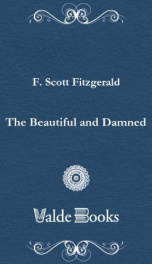
The Beautiful and Damned
Series:
Unknown
Year:
Unknown
Raiting:
5/5
t Many readers agree that this book is one of the best works by Francis Scott Fitzgerald narrating about an affair between two young people. It is not even an affair; it starts like a real life when lovers are attracted to each other because of their differences but at the end their wish to become rich spoils their relationship. Anthony and Gloria Patch live in New York and wait for the death of Anthony's grandfather as they want to inherit his money. They met in New York suddenly and unexpectedly. Gloria comes from Kansas City; she is very spoiled and is not used to doing any kind of domestic work. She prefers spending time with her friends at cafes and bars, Gloria wants to lead a luxury life eating at expensive restaurants, renting luxury apartments, buying modern cars and so on. The author makes a wonderful plot having written the characters and their love in details. Anthony and Gloria seem to be real and very alive giving them good and bad traits for which readers love them. Other characters are also very bright and memorable, for example, Maury Noble, Anthony's best friend. We also meet a talented writer Richard Caramel who has written his first book and is planning to create a second one searching for inspiration. Joseph Bloeckman is German who moved to America when he was young. You will never forget the friends of the Patches silent Jewess Rachael Barnes and talkative Muriel Kane or Japanese woman Tana who looks for the house of the Patches. The book must be interesting for all readers who are in love or have ever loved in their lives.
Show more
add to favoritesadd In favorites
What readers are saying
What do you think? Write your own comment on this author!
write a commentif you like Fitzgerald Francis Scott try:
readers also enjoyed
What readers are saying
What do you think? Write your own comment on this author!
write a commentGenre
if you like Fitzgerald Francis Scott try:
readers also enjoyed
Do you want to exchange books? It’s EASY!
Get registered and find other users who want to give their favourite books to good hands!
